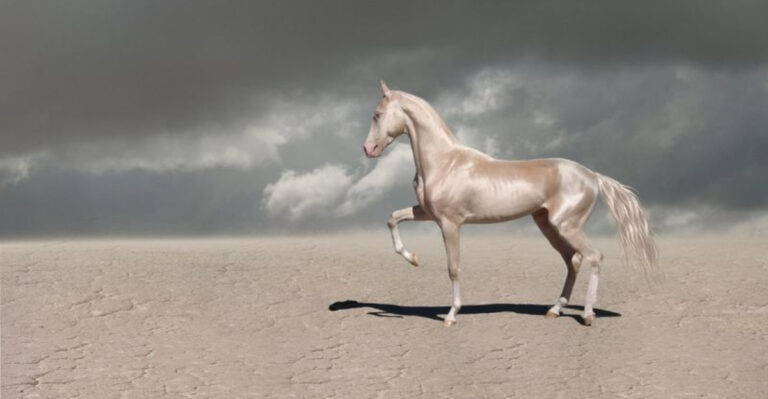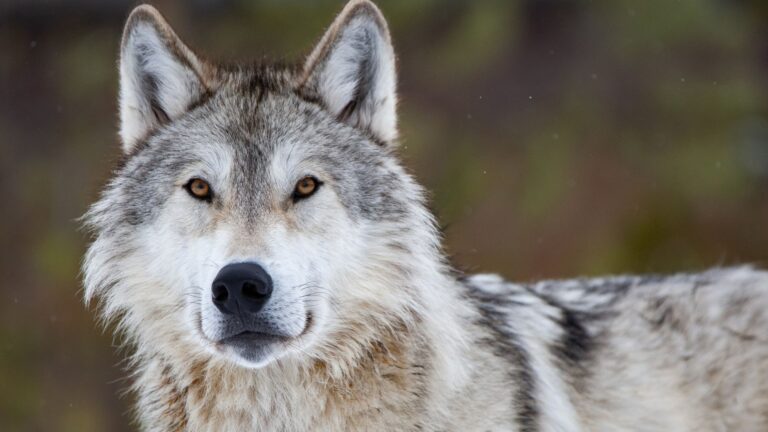Galápagos Marine Iguana Looks Like Godzilla’s Cousin

Imagine a creature that looks like it stepped right out of a monster movie—a reptile with rocky black scales, a sleek, muscular build, and an air of mystery about it.
The Galápagos Marine Iguana could easily be mistaken for Godzilla’s cousin! Found only in the Galápagos Islands, this incredible iguana has adapted to life in the harsh coastal environment, where it swims and dives for food, making it the world’s only marine lizard.
Let’s dive into the world of this prehistoric-looking creature, uncovering its amazing survival skills and the secrets behind its unique, otherworldly appearance.
1. The Only Marine Lizard
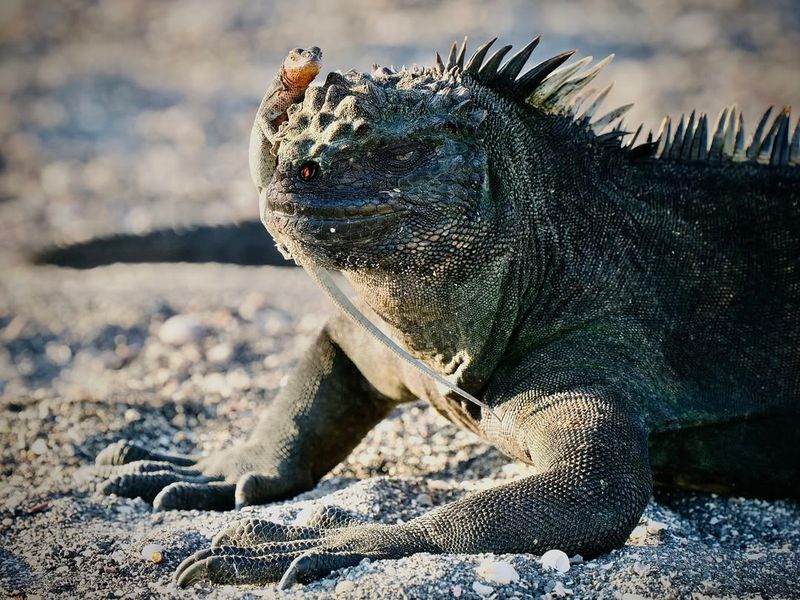
Imagine being the only lizard that can swim in the ocean! The Galápagos marine iguana is truly a trailblazer, having adapted to a life where land meets sea. These reptiles are exclusive to the Galápagos Islands and have evolved to conquer the ocean’s challenges. Their ability to dive deep for algae makes them a rare marvel among their reptilian cousins.
Their bodies tell the tale of adaptation, with flattened tails for swimming and sharp claws to cling to slippery rocks. They bask in the sun to regulate their body temperature after chilly ocean dives. Each anatomical feature screams innovation in the face of ecological hurdles.
Their unique lifestyle sets them apart in the natural world, drawing scientists and curious minds alike. With every dive, they rewrite the rules of reptilian existence, proving that sometimes, being different is the only way to survive. The Galápagos marine iguana is no ordinary creature—it’s a testament to evolution’s power and the wonders of nature.
2. Color Changing Abilities
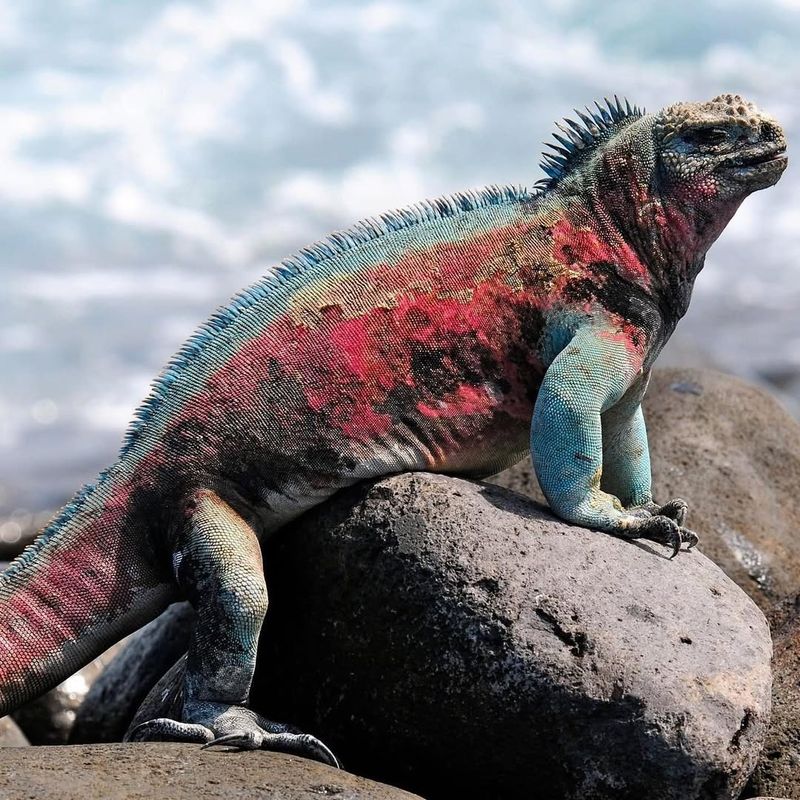
Color is more than just decoration for the Galápagos marine iguana; it’s a language of survival and love. During the breeding season, males transform into vibrant hues of red and green to attract mates, a spectacle that turns the rocky shores into a living art gallery.
These color changes are not just for show. They signal health, vitality, and the readiness to mate, playing a crucial role in the iguana’s social dynamics. The vibrant display is a testament to the iguana’s adaptability and the enchanting cycles of nature.
Beyond the breeding season, their skin takes on darker tones, helping them absorb sunlight to warm up after a dip in the cool ocean waters. This color-shifting ability ensures they remain active and efficient in their unique habitat. It’s a kaleidoscope of survival strategies painted on their scales, a vivid dance of evolution at its finest.
3. Algae Eaters
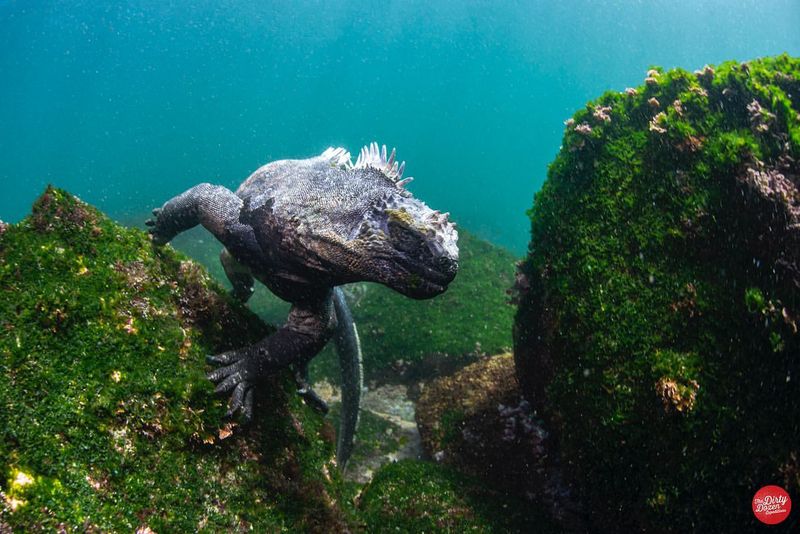
In the underwater banquet of the Galápagos Islands, marine iguanas are the unrivaled connoisseurs. They feast exclusively on algae, diving up to 30 feet beneath the waves to graze on their favorite greens. It’s a diet that defines their existence and keeps the ocean ecosystem in balance.
Their snouts are perfectly shaped for scraping algae off rocks, and their powerful limbs make them agile swimmers. This specialized diet has even influenced the development of their teeth and jaws, perfectly designed for their vegetarian lifestyle.
Their feeding habits have implications far beyond their survival. By controlling algae growth, they maintain the delicate balance of marine life in their habitat. These underwater gardeners play a vital role in the health of their ecosystem, an unsung heroism masked by their leisurely grazing.
4. Remarkable Climbers
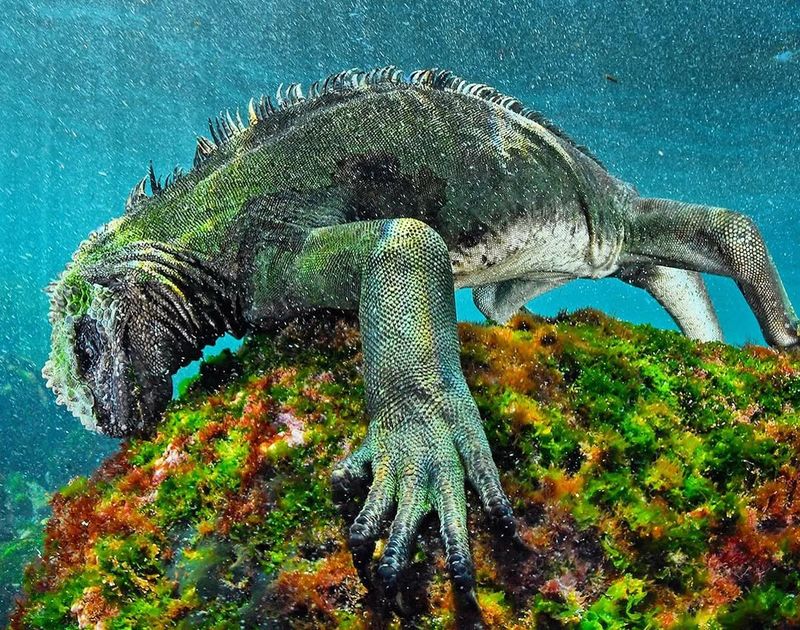
Scaling rocks with the poise of a seasoned mountaineer, the Galápagos marine iguana is an expert climber. Their sharp claws and strong limbs allow them to navigate the rugged, volcanic landscapes of their island home with remarkable ease. Climbing isn’t just an impressive skill; it’s a daily necessity.
Their climbing prowess helps them access sunny spots for basking and escape the reach of predators. These iguanas can often be found perched on steep cliffs, where they enjoy a commanding view of their surroundings. It’s a vantage point that offers safety and plenty of sunshine to regulate their body temperature.
This climbing ability is a testament to their adaptability, a critical trait for survival in such a dynamic environment. Every ascent up the jagged rocks echoes the evolutionary journey of a species molded by the forces of nature.
5. Social Creatures
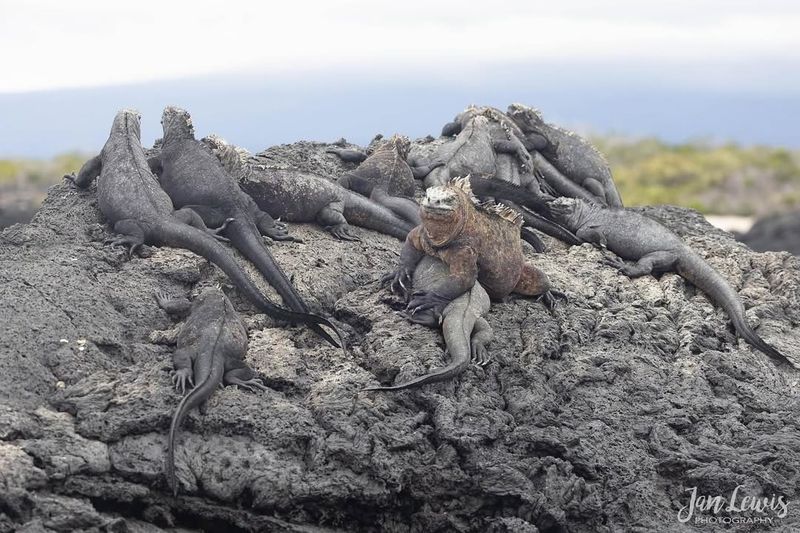
Marine iguanas might seem like solitary wanderers, but they are surprisingly social. These reptiles often congregate in large groups, basking in the sun or huddling together for warmth during the cool island nights. This social behavior is a crucial survival strategy, providing both warmth and protection.
Their social gatherings are not just about warmth; they also serve as a defense against predators. There’s safety in numbers, and a large group of iguanas can deter even the most persistent threats. It’s a community built on cooperation and shared survival instincts.
These gatherings create a unique opportunity for interaction and communication, crucial for social animals. Despite their prehistoric appearance, marine iguanas engage in complex social behaviors, reinforcing bonds and establishing hierarchies within their colonies. It’s a fascinating glimpse into the social lives of reptiles, a world where survival depends on the strength of community.
6. Cold-Blooded Survivors
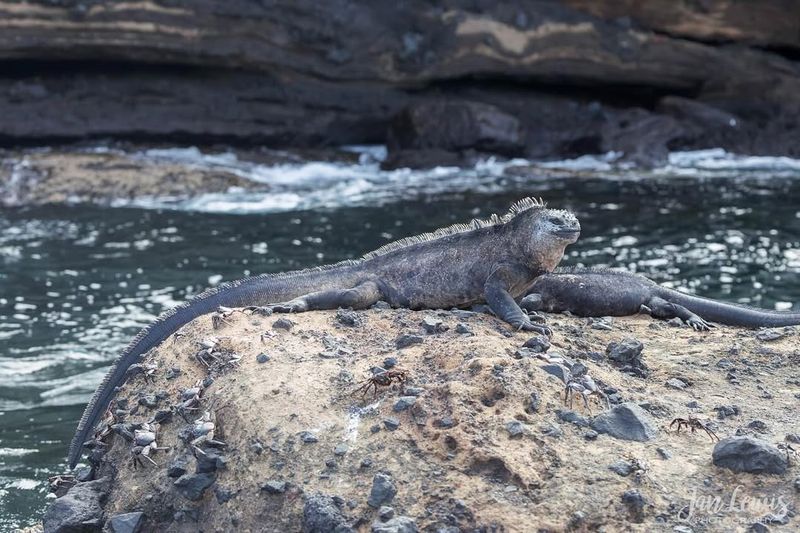
In the realm of survival, the Galápagos marine iguana has mastered the art of thermoregulation. As ectothermic creatures, their body temperature is dictated by the environment, making the sun their most vital ally. Basking in sunlight is not just a preference; it’s a lifeline.
After a swim in chilly waters, they sprawl over the sunlit rocks to absorb warmth and elevate their core temperature. This behavior is crucial for maintaining their bodily functions and overall energy levels. Their dark skin is an evolutionary boon, rapidly soaking up the sun’s rays.
Their incredible resilience to temperature fluctuations showcases their adaptability to the harsh conditions of their island habitat. Being cold-blooded is a challenge, yet marine iguanas turn it into a strategy for survival, thriving where other reptiles might falter. It’s a testament to their robust, indomitable nature in a world where the sun dictates the rhythm of life.
7. Unique Nasal Glands
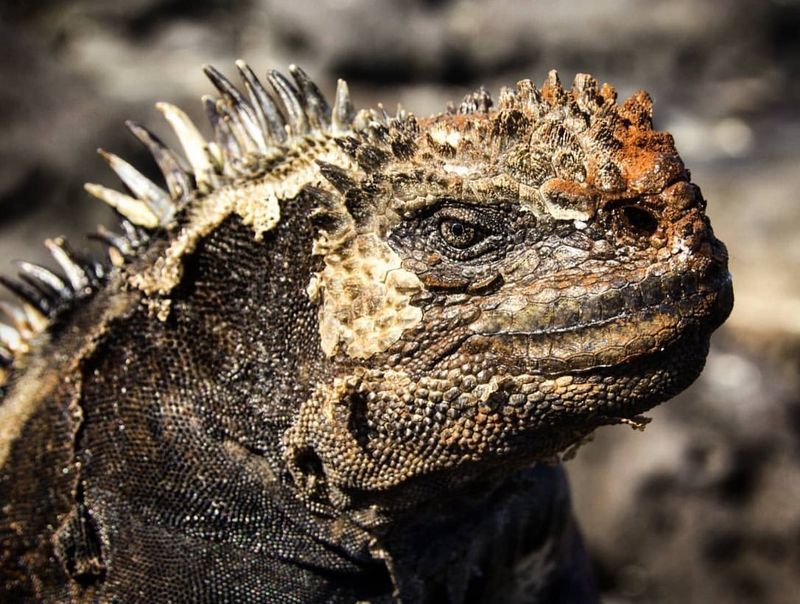
Ever seen a lizard sneeze? The Galápagos marine iguana’s unique nasal glands allow it to do just that, expelling excess salt from their bodies in a most peculiar way. This adaptation is crucial to their survival, as their diet of salty algae requires them to efficiently regulate their body’s salt levels.
The sneezing sprays fine salt crystals, a spectacle that’s as fascinating as it is vital. This adaptation highlights their incredible ability to thrive in a challenging marine environment where salt can pose a significant threat to their health.
Their nasal glands are a prime example of evolutionary innovation, a specialized feature that supports their unique lifestyle. It’s not just a quirky behavior; it’s a critical part of their biological toolkit, enabling them to maintain balance in their saline world.
8. Endemic to Galápagos
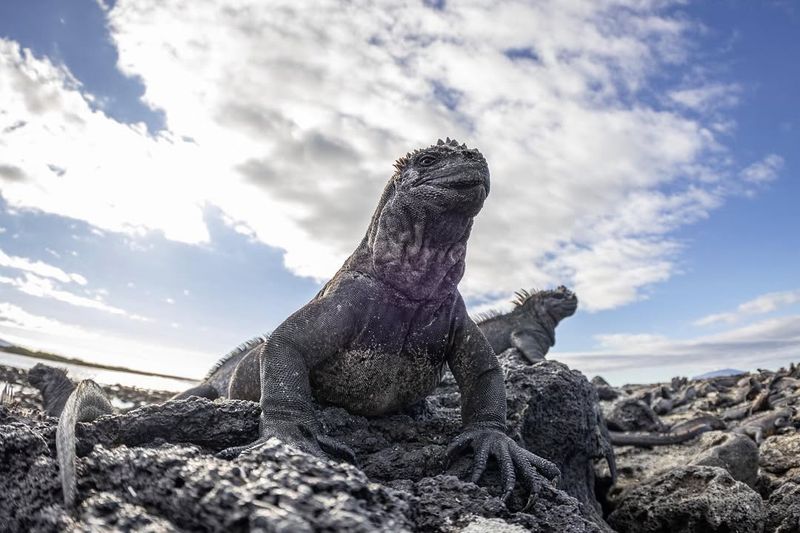
The Galápagos marine iguana is a creature of exclusivity, found nowhere else on Earth but these isolated islands. Their existence is a testament to the unique evolutionary pressures that shaped the Galápagos archipelago’s wildlife. This island exclusivity makes them a symbol of biodiversity and natural wonder.
This endemic status underscores the importance of conservation efforts in these islands. Protecting the marine iguana means preserving a piece of the Earth’s natural heritage, a living relic of evolutionary history.
Their presence here is a reminder of nature’s capacity for diversity, fostering life forms that defy conventional categories. Their survival depends on the delicate balance of their ecosystem, making them a flagship species in the fight to conserve these pristine environments. The Galápagos marine iguana is more than a lizard; it’s an ambassador of uniqueness and an icon of evolutionary creativity.
9. Ancient Mariner
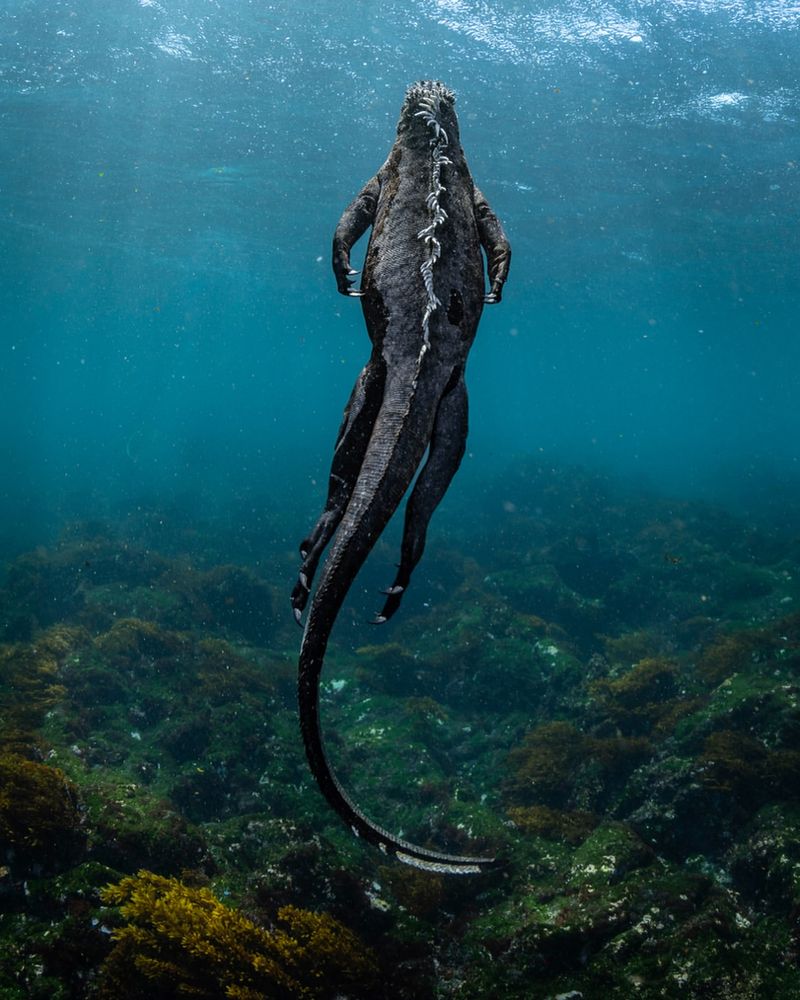
With a lineage tracing back millions of years, the Galápagos marine iguana carries the legacy of ancient mariners. Their ancestors arrived on the islands and adapted to a life both on land and sea, showcasing a remarkable journey through time.
Their ability to thrive in such a demanding environment speaks to their resilience and adaptability. These iguanas are living relics of natural history, bearing witness to the ever-changing dynamics of island life.
The story of the marine iguana is one of endurance and evolution, a narrative written in the rocky shores and azure waters of the Galápagos. Each iguana is a chapter in a saga that spans epochs, a living testament to nature’s enduring spirit and the intricate tapestry of life.
10. Conservation Challenges
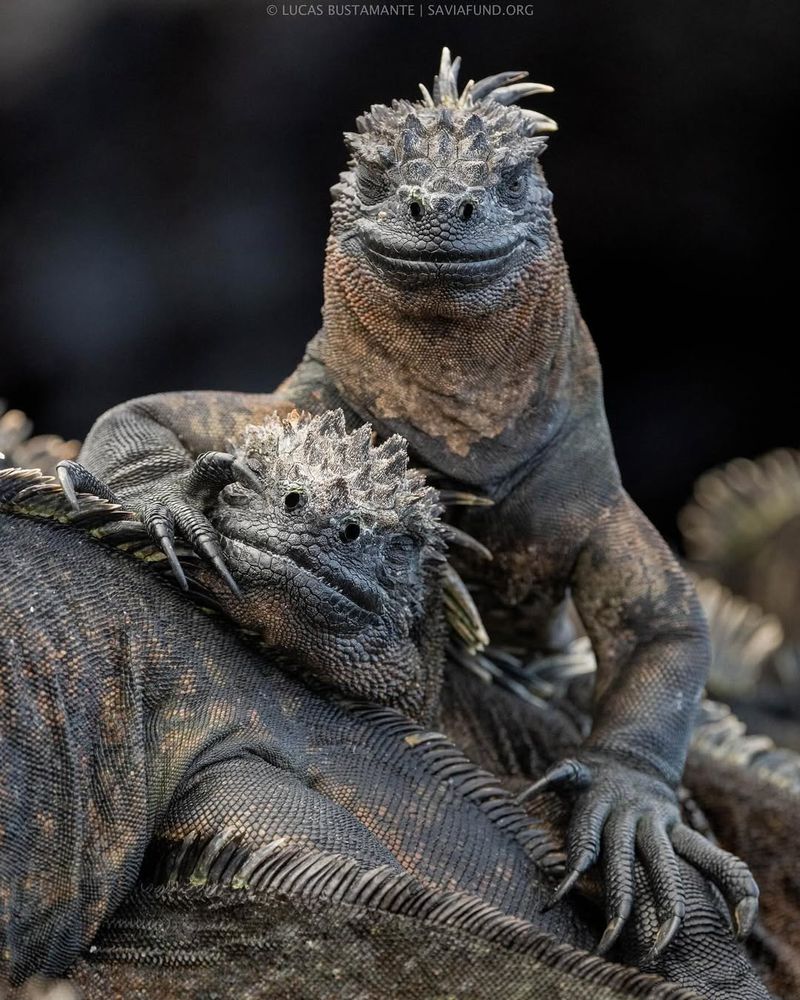
Despite their robust nature, Galápagos marine iguanas face significant conservation challenges. Human activities and climate change pose threats to their delicate ecosystem, leading to habitat loss and food scarcity.
Efforts to protect them are crucial, as these lizards are vital to the ecological balance of the islands. Conservationists work tirelessly to safeguard their environment, ensuring that these unique creatures continue to thrive.
Their plight highlights the broader issue of environmental stewardship. Protecting the marine iguana means preserving the Galápagos Islands’ unique biodiversity. It’s a mission that echoes the global call for sustainable practices and the protection of our planet’s natural wonders. The survival of the marine iguana is not just a local concern; it’s a symbol of the broader challenge facing wildlife in a rapidly changing world.

